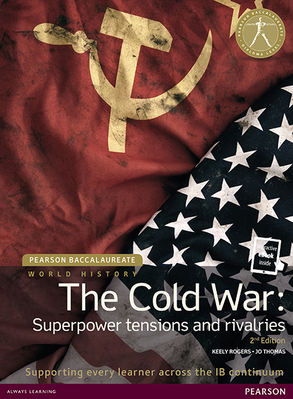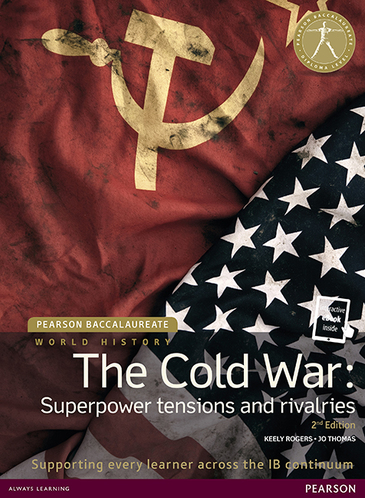|
Lesson Objectives
To identify the causes of ideological conflict in Asia and to assess why the US policy of containment switched to Asia To identify the causes and consequences of the Korean War and evaluate its impact on the Cold War. To analyse US containment policy in Asia and evaluate the reasons for its successes and failures To analyse the War in Vietnam in order to evaluate the reasons for the failure of Containment
The Rosenberg's
Role of the FBI
McCarran Act (1950)
Why was McCarthy finally discredited?
Activity 2: What is the message of this cartoon regarding the impact of McCarthyism on American society? The cartoon shows the Statue of Liberty, which is a representation of the US as a whole this implies the spread of McCarthyism across the US. The cloud is dark and large and this can symbolize gloom and sadness. Activity 3: Read the extract from NSC-68, identify the key phrases in the document that help explain why LaFeber believe it to be one of the most important documents of the Cold War. Give your reasons for your choice. 'Strike out a bold and massive program of rebuilding the West's defensive potential to surpass that of the Soviet world' It shows the US was willing to aid and support other countries and its superiority as a superpower. It also shows that the US perceives the USSR as a weaker force than them. 'An immediate and large scale build-up in our military and general strength' It shows that the US is a superpower and is more superior than other nations, belief they are stronger than others. Activity 4: What international considerations would have an influence on Truman's decision to become involved in the Korean War?
What domestic considerations would have an influence on Truman's decision to become involved in the Korean War?
|
The Korean War
Causes and Consequence of the Korean WarKorean War
Causes of the Korean War Failure to unite Korea after WW2
|
Textbook ActivitiesActivity 5: What similarities and what differences are there in the way in which Germany and Korea each became divided into two separate countries?
Similarities USSR and US supported one side of the divided country Korea was split into two sections, unlike Germany which was split into four sections Differences USSR set up a Communist government, US set up a Democratic government Korea had the involvement of neighboring countries, China and Japan Activity 6: John Lewis Gaddis suggest the Korean War could be called 'A Comedy of Error's', discuss what misconceptions guided the thinking of Truman, Stalin and Mao during the planning and course of the Korean War Truman: Soviet 'sphere of influence' was spreading into Asia, direct result of Stalin Stalin: Aimed to gain more territory, spread influence throughout Asia Mao: Believed if China assisted the USSR would support them further, aiming to improve and gain superpower status The initial crisis that followed the North Korean invasion of South as a Case Study in crisis, instead of suing the course of the war itself, focus on the crisis that led to the US-led UN force intervening North Korea: aimed to control and defeat the South, resulting in the South fighting back- with the assistance of the UN (led by General MacArthur), resulting in a stalemate at the 38th parallel Activity 7: What is meant by the reference to using a 'roundish one'? 'Round'- the whole word, represents Marshalls attempt to gain a global view on foreign policy worldwide What is the problem with using only a 'squarish one'? 'Square'- MacArthur targeting Asia as the Cold War spread globally, needed to take a less bias perspective and address the issue globally Activity 8: How did can the Korean War be seen as a Civil War The Korean War divided Korea into the North and South. They shared different ideologies as well as were supported by different countries (US and USSR). The war was fought internally between the two sides of Korea, it was mainly fought by Koreans but had foreign assistance on both sides. |
Role of the USA
- Korean peninsula, both superpowers began to withdraw their troops
- 1948: Soviet troops left the North
- Mid 1949: US troops left the South
- January 1950: Dean Acheson's 'perimeter' speech, the US declared that they wouldn't commit troops in mainland Asia
- Withdrawal of troops left a power vacuum in Korea- US declared that they wouldn't commit troops in mainland Asia
- Withdrawal of troops left a power vacuum in Korea- hostilities between the two Koreas could develop, the withdraw of US troops
- Presented Kim Il Sung with an opportunity
- Both leaders wanted to reunify Korea on their own terms- ideology
- Kim Il Sung tried to persuade Stalin into supporting an attack on the South, which he eventually agreed
- Stalin wasn't to blame for the war, his support for Kim Il Sung was significant in the North's decision making
The Role of Stalin
- Stalin was hopeful of winning
- 1949: first atomic bomb, Chinese communist victory
- Japan threatened Stalin's control in the region
- Opportunity to spread communist influences
The Role of Mao Zedong
- Kim Il Sung had the support of China
- Mao was initially skeptical about the success of the invasion
- Kim persuaded Mao that Stalin was more enthusiastic than he actually was- Mao was keen to gain support from Stalin for a planned attack on Taiwan
- Mao gave his approval to Kim to an attempted invasion of the South
Effects on the USA
- Korean war heightened US fears of further Soviet aggression elsewhere, the NSC-68 recommendations to triple the defense budget were approved
- US land forces in Europe were strengthened along with NATO- added Greece, Turkey and West Germany
- Plan had already been discussed before the war- severed as a catalyst for these policies
- 1952: USA signed the Treaty of San Francisco with Japan, allowed the USA to build military bases and rapidly rebuild the economy
- US began increasing its support for Chiang Kai-shek in Taiwan, isolate China
- 1954: Southeast Asia Treaty Organization (SEATO), anti-communist containment bloc.
- Members: Thailand, Philippines, Pakistan, USA, UK, France, Australia, New Zealand
Effects on Korea
- War had cost the lives of over 300,000 civilian and property damage was huge, peninsula became permanently divided with no hope of reunification
- 38th Parallel became a new heavily defended frontier in the Cold War that exist even today
- North Korea remains under Communist rule while South Korea became a successful democratic and capitalist nation
Effects on China
- China's reputation grew after the war, having successful pushed back US forces, increased Mao Zedong's reputation and helped him to consolidate the Communist revolution in China
- Stalin' reluctance to help China throughout the war would eventually contribute to the divisions between the two powers- with China taking a more independent stance away from Moscow
- Mao's aim of uniting Taiwan with China became harder as the USA now committed itself to defending Taiwan
Effects on the USSR
- USSR was not directly involved in the Korean War, did give tacit consent to North Korea
- Long term- the outcome of the war damaged Soviet interests, the USA's decision to triple its military spending, rearm West German, maintain troops in Europe and contain Communism in Asia, drew the USSR into a wider, global conflict
- Stretch Soviet commitments throughout the world, harming their economy
Effects on Southeast Asia
- Korean War was an attempt by the USA to contain communism in Asia, Asia was now a new battleground in the Cold War
- Nationalist groups in countries like Vietnam, Cambodia, Malaysia and Philippines all sought independence from Colonial powers- some movements were communist and increasingly relied on USSR or China for support
- US policies increasingly confused these national communist group as being allied with Moscow, eventually lead to the USA's involvement in Vietnam
Effect on the Cold War
- Korean War effectively globalized the Cold War, no longer just a European conflict but a global conflict would also affect other parts of the world
- Led to increasing militarization, both side increased their military budgets, with the USA's military budget, reaching 10% of GNP in the 1950s
- USSR increased the size of the Red Army from 2.8 million troops to 5.8 million





